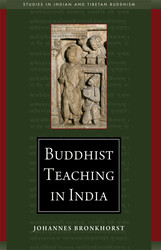Get our latest book recommendations, author news, and competitions right to your inbox.
Remembering the Lotus-Born
Padmasambhava in the History of Tibet's Golden Age
Table of Contents
About The Book
Tibetan and Western scholars alike have long assumed that the Copper Island Biography of Padmasambhava was originally presented as a treasure text (terma). However, investigating the sources of this narrative shows that rather than wholesale invention or simple revelation, the Copper Island was a product of the Tibetan assimilation and innovation of core Indian Buddhist literary traditions. These traditions were well known to Nyangrel, who is renowned as the first of the great Buddhist treasure revealers. Remembering the Lotus-Born takes an unprecedented look at Nyangrel’s work in the Copper Island, including his contributions to hagiography, reincarnation theory, treasure recovery, historiography.
Drawing all these threads together, it concludes by comparing all the available versions of Nyangrel’s Padmasambhava narrative to challenge long-held assumptions and clarify its origin and transmission.
It received an Honorable Mention from the E. Gene Smith Book Prize Competition in 2018 by the Association for Asian Studies.
Product Details
- Publisher: Wisdom Publications (October 25, 2016)
- Length: 320 pages
- ISBN13: 9781614292463
Raves and Reviews
“Nyangrel Nyima Öser (1124–92) is one of the more perplexing figures in Tibet's cultural history. His importance for being the first to introduce Padmasambhava as the Tibetan culture hero cannot be overestimated, as are the revelatory texts and perhaps also the history of Buddhism in India and Tibet with which he is credited. Yet not much is known about his intellectual and spiritual development. In his splendid study, Hirshberg sums up his importance in the following words: ‘Nyangrel was both the architect of his enlightened identity and the product of his time. He was at once an excavator of Tibet's past and the author of its future.’ Hirshberg's meticulous analyses go a long way in leading us to understand the text-historical issues that beset his hagiography of Padmasambhava and his chronicle of Buddhism. No one engaged in the serious study of Tibetan culture can ignore this masterful work that is destined to change minds.”
– Leonard van der Kuijp, Harvard University
“The centrality of the Indian tantric master Padmasambhava to Tibetan historical sensibilities has long been understood, but the formation of the key legends and their promulgation as virtually a national mythology have only recently begun to receive the sustained attention of scholars. In Remembering the Lotus-Born, Daniel Hirshberg advances the inquiry, demonstrating the interrelations that emerged among Tibetan cultural memory, Buddhist theories of reincarnation, and the ongoing revelation of terma, or ‘treasures.’ I highly recommend this important contribution to the history of Buddhism in Tibet.”
– Matthew Kapstein, University of Chicago & École Pratique des Hautes Études
“Hirshberg’s remarkable study throws an entirely new light on Nyangrel Nyima Öser, one of the most influential figures in the entire history of Tibetan religion. Hirshberg’s point of departure is Nyangrel’s production of the famous Copper Island Biography of Padmasambhava. In addition, Hirshberg goes on to show how Nyangrel also shaped wider Tibetan Buddhism in several fundamentally important yet hitherto unexpected ways, far beyond the confines of the Nyingma school that he is already well known for having re-founded.”
– Robert Mayer, Oxford University
Resources and Downloads
High Resolution Images
- Book Cover Image (jpg): Remembering the Lotus-Born eBook 9781614292463
















